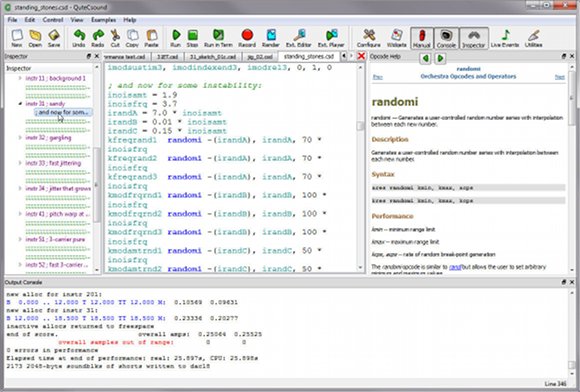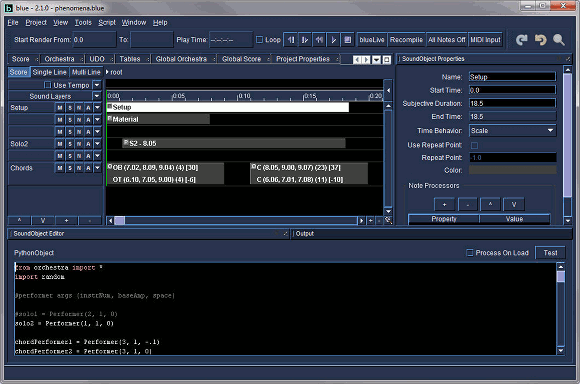In this guest column, we turn to veteran synthesist and music tech expert Jim Aikin. When Jim wants to do digital synthesis, one of the tools to which he turns is a veritable favorite with a direct-line legacy to the beginnings of computer sound. That doesn’t mean Csound hasn’t kept with the times, though, or that it has to be unfriendly. If you’ve been looking for a way to dive into sound and code, this could be an ideal path. -Ed.
Csound is one of the most powerful pieces of free, open-source, cross-platform music software in the world. But it’s not the most user-friendly. With the release of QuteCsound 0.6.0, developer Andres Cabrera has made Csound about as easy to use as it’s ever likely to be. You still have to type code — instruments and scores are created in ASCII. But QuteCsound streamlines the process with a built-in text editor that has auto-complete, syntax coloring, and a clickable index pane that lets you jump directly to any comments that you’ve entered in your score.
QuteCsound implements an excellent set of mousable graphic widgets for real-time control. (Okay, it’s not Max, but you can do a lot.) In another pane in the main QuteCsound window you can display the Csound manual. Using pop-up windows, you can define looping score segments and start and stop them with mouse-clicks.
All of the features of Csound, including real-time MIDI and OSC I/O, are available in QuteCsound. After creating a few instruments and a score, you just click the Run button — no need to invoke Csound from a command line. The command line flags are tucked away safely in a dialog box. (Yes, it’s not the ’70s anymore.)
Csound itself is a separate download. Both Csound and QuteCsound are available in doubles (-d) and float (-f) versions, and your two installs must match.
If you’re comfortable with writing code, you may also want to look at blue. Like QuteCsound, blue is free and cross-platform (Mac/Win/Linux). Now at 2.1, blue is a deeper and more powerful but less transparent front end for Csound. To my way of thinking, QuteCsound is more like “vanilla Csound with real-time graphic widgets and a nice text editor.” Blue is a multi-track composition environment in which each of the Sound Objects positioned on a track is created using Csound code.
If you’ve never looked at Csound, it may be a bit intimidating at first. One of the best ways to really learn the system is by buying a copy of The Csound Book, a fat volume that will take you as deep into the math. Advanced math isn’t necessary to produce sound, fortunately.
Here’s my favorite example of how easy it can be. Would you like a ring modulator effect? You can do that in Csound with a single character — an asterisk (multiplication sign). This line:
asig3 = asig1 * asig2
…ring-modulates signal 1 by signal 2 and puts the output in signal 3. There’s a little more to it than that: You have to make very sure that the levels of the two inputs never exceed 1.0. I usually recommend that newcomers to Csound not use headphones, because a bug in your code can cause ear damage! But with a little effort, you can build complex modular synthesizers in Csound using many different types of synthesis. If you take the time to get into it, you’ll be amazed at what it can do.
Visit Jim at musicwords.net. Now, if you’ll excuse me, I have to give this a try myself. -Ed.

